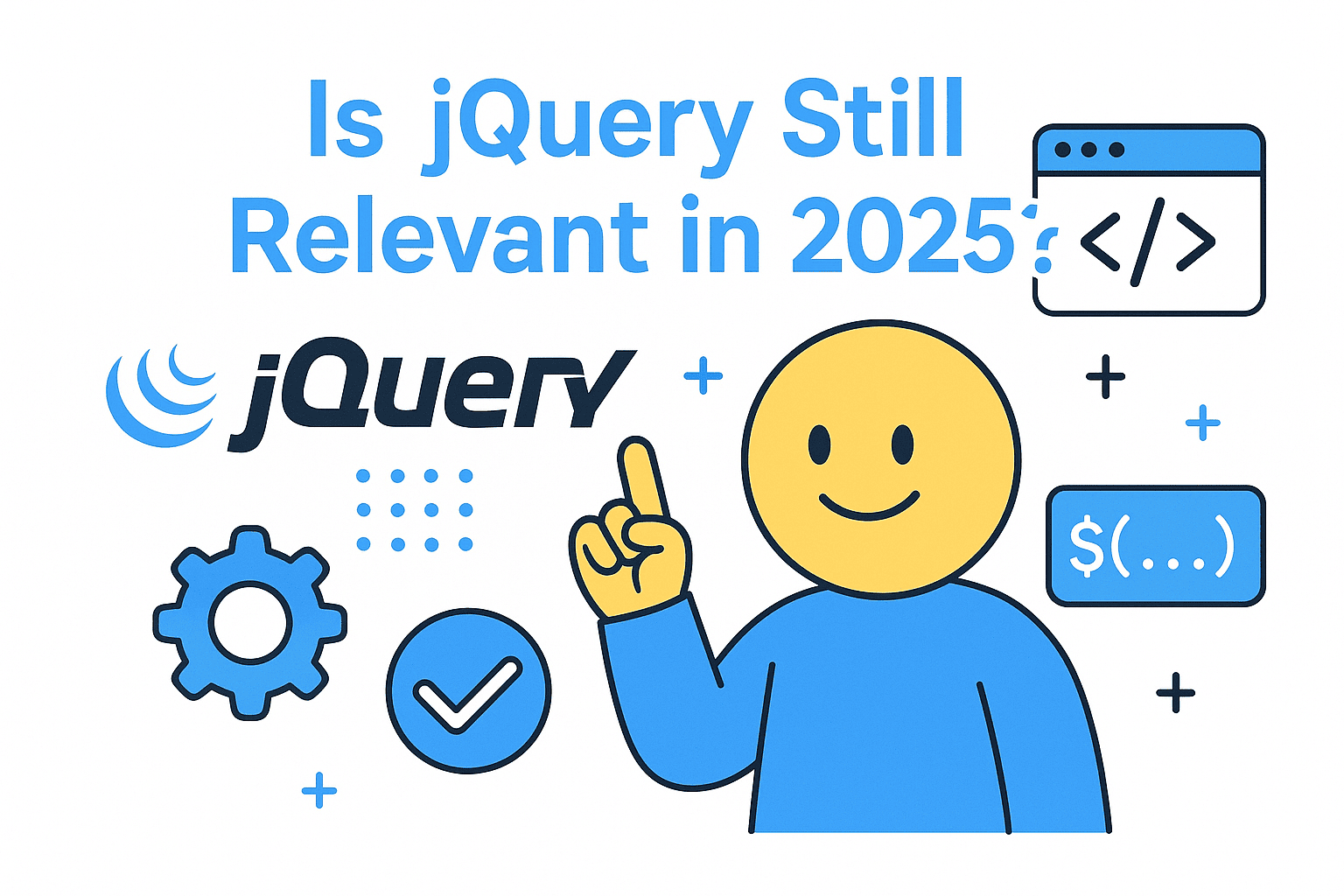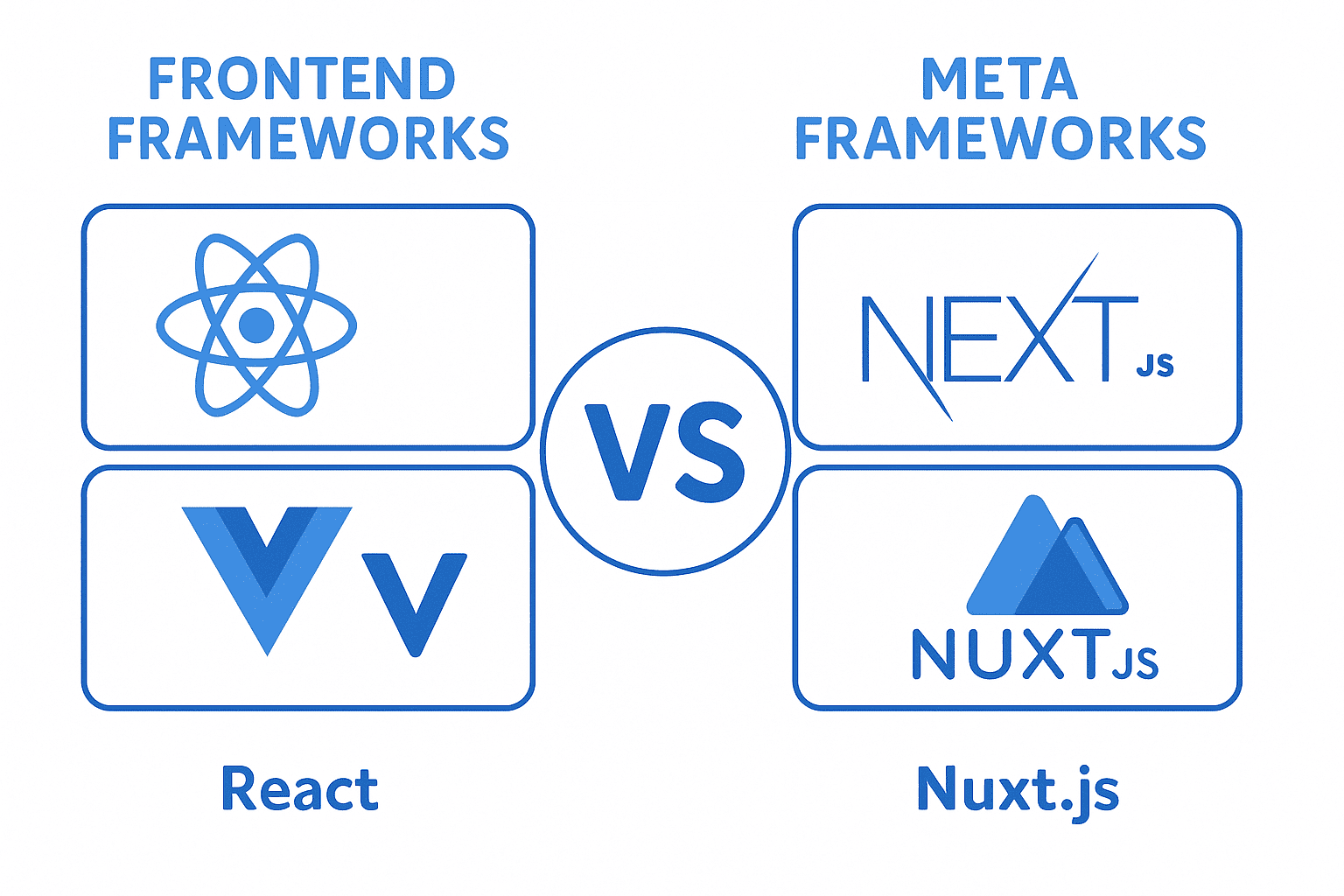jQuery has been around since 2006, and while modern JavaScript (ES6+) and frameworks like React or Vue dominate today’s landscape, jQuery still powers millions of websites. Its simplicity, cross-browser compatibility, and robust plugin ecosystem make it a valuable skill for developers working with legacy projects, or when you just need something quick and lightweight.
This Part 1 of our jQuery Crash Course will walk you through:
- What jQuery is and why it’s still useful.
- Setting up a modern project with Vite + jQuery.
- Core jQuery concepts: selectors, DOM manipulation, and events.
- Hands-on code examples.
In Part 2, we’ll dive into AJAX with jQuery.
What is jQuery?
jQuery is a fast, lightweight JavaScript library designed to simplify HTML DOM traversal, event handling, animations, and AJAX. Its motto, “Write less, do more,” perfectly captures why it became so popular.
For example:
Vanilla JS
document.getElementById("myBtn").addEventListener("click", function () {
alert("Button clicked!");
});
jQuery
$("#myBtn").click(() => alert("Button clicked!"));
With just one line, jQuery streamlines what used to be verbose and cross-browser tricky code.
Setting Up a Project with Vite + jQuery
Although jQuery was originally used by just linking a CDN script in HTML, let’s modernize the setup using Vite, a blazing-fast frontend tool.
Step 1: Initialize a Vite Project
Create a new project
npm create vite@latest jquery-crash-course
Navigate into it
cd jquery-crash-course
Install dependencies
npm install
Step 2: Install jQuery
npm install jquery
Step 3: Import jQuery in Your Project
Inside main.js (or index.js depending on your setup):
import $ from "jquery";
$(document).ready(function () {
console.log("jQuery is working with Vite!");
});
Step 4: Run the Dev Server
npm run dev
Open the project in your browser, you’re officially running jQuery with Vite. 🚀
jQuery Basics with Code Examples
1. jQuery Selectors
Selectors let you grab elements quickly.
// By ID
$("#title").text("Hello jQuery!");
// By Class
$(".btn").css("color", "blue");
// By Element
$("p").hide();
2. DOM Manipulation
Change or add content dynamically.
// Change text
$("#title").text("Welcome to the jQuery Crash Course");
// Add HTML
$("#content").html("<strong>Learning made easy!</strong>");
// Append new element
$("#list").append("<li>New Item</li>");
3. Event Handling
jQuery makes handling events elegant.
// Click event
$("#myBtn").on("click", () => {
alert("You clicked the button!");
});
// Hover event
$("#myDiv").on("mouseenter", () => {
$("#myBtn").css("background-color", "lightblue");
});
$("#myDiv").on("mouseleave", () => {
$("#myBtn").css("background-color", "white");
});
4. Simple Animations
jQuery comes with built-in effects.
// Fade out element
$("#box").fadeOut(1000);
// Slide toggle
$("#menuBtn").on("click", () => {
$("#menu").slideToggle();
});
4. Simple Animations
jQuery comes with built-in effects.
// Fade out element
$("#box").fadeOut(1000);
// Slide toggle
$("#menuBtn").click(() => {
$("#menu").slideToggle();
});
Why Use jQuery in 2025?
- Legacy Projects: Still widely used in WordPress, Drupal, Shopify, and older apps.
- Quick Prototyping: Easy to get things running without large frameworks.
- Plugin Ecosystem: Thousands of prebuilt plugins for UI widgets, sliders, validation, etc.
While you wouldn’t build a large-scale app with jQuery today, it remains relevant when speed and compatibility matter.
What’s Next (Part 2 Teaser 🚀)
In Part 2 of this jQuery Crash Course, we’ll cover AJAX with jQuery, how to make asynchronous requests, fetch APIs, and dynamically update your webpage without reloading.
Stay tuned, it’s where the real magic happens.
Conclusion
You’ve just set up a modern jQuery project with Vite, learned selectors, DOM manipulation, event handling, and even basic animations.
🤝 Need a Custom RSVP System or Dashboard?
I help businesses build tools that actually work , even on tight deadlines.
Whether you're planning an event, need internal tools, or want a custom dashboard for your team , I can help.
Reach out
📧 Email: safi.abdulkader@gmail.com | 💻 LinkedIn: @abdulkader-safi | 📱 Instagram: @abdulkader.safi | 🏢 DSRPT
Drop me a line, I’m always happy to collaborate! 🚀



